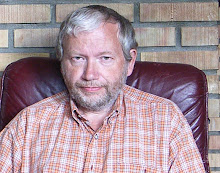Positive that still more researchers are convinced that we ourselves cause extreme weather:
http://www.sciencedaily.com/releases/2012/03/120325173206.htm
In my experiments earlier (see older posts) I showed that CO2 or CO2 and traces of certain particles in calm water caused an uneven and delayed melting of ice there compared with ice in pure water - so with CO2 there were outbursts of heat only at some moments to give the ice cube a sidewise pointy edge by those outbursts that probably had one part of warmer current together with a bit cooler one - this meant a regular triangular shaping of the ice cube (opposed to the ice cube in pure water that melted regular with square shape). When I stirred contents there were further delayed melting of ice cubes no matter of how much CO2 or extra particles there were, but there was even and regular melting of the ice cubes - meaning better distributions of heat is of utter importancy in the environment.
In the experiments with calm water the ice cubes floated near the water surface, so the heat currents at the water surface spread along downward the ice cubes and did not go deeper than the lower part of the ice. If there was more heat at the water surface than at the bottom of the ice cubes, I guess there after awhile would be a pointy top edge of each ice cube, but that was not the case. By this I have shown that the experts were wrong to think that CO2 bubbles will isolate against melting of ice, since the sides were straight and the top of ice cubes covered with less CO2 bubbles did not melt faster to give a cavity there!
By stirring the contents I spread the heat below the lower part of the ice cubes, so there was much less heat from currents that would melt the floating ice cubes, and the currents got locked in regular distributions all over. So no wonder the ice cubes lasted much longer after first some stirring. When you have a cool drink with ice cubes you must remember to stirr at once (otherwise the ice cubes will melt much faster and the drink will all in all be less cooled down). Stirred and not shaken, then. Opposite with a hot coffee, hot soup... that will have an early cooler upper part ("skin" in some cases) - stirring will release heat in lower pockets to make the coffee etc feel warmer than without stirring. To make the coffee "last longer", you only stirr at a later moment.
By carefully terraforming the environment man may take controll over the weather when we learn how currents can be spread out and distributed no matter how much heat is added in the system by the sun (and the internal heat from the earth) and no matter how much CO2 and particles (aerosols) there are. But we must cut the releases of CO2 plus particles until we are clever enough. And in the meantime we can use simple terraforming and restoring solutions we already have the knowledge about - no excuse to delay that!
2012-03-28
Subscribe to:
Post Comments (Atom)


No comments:
Post a Comment